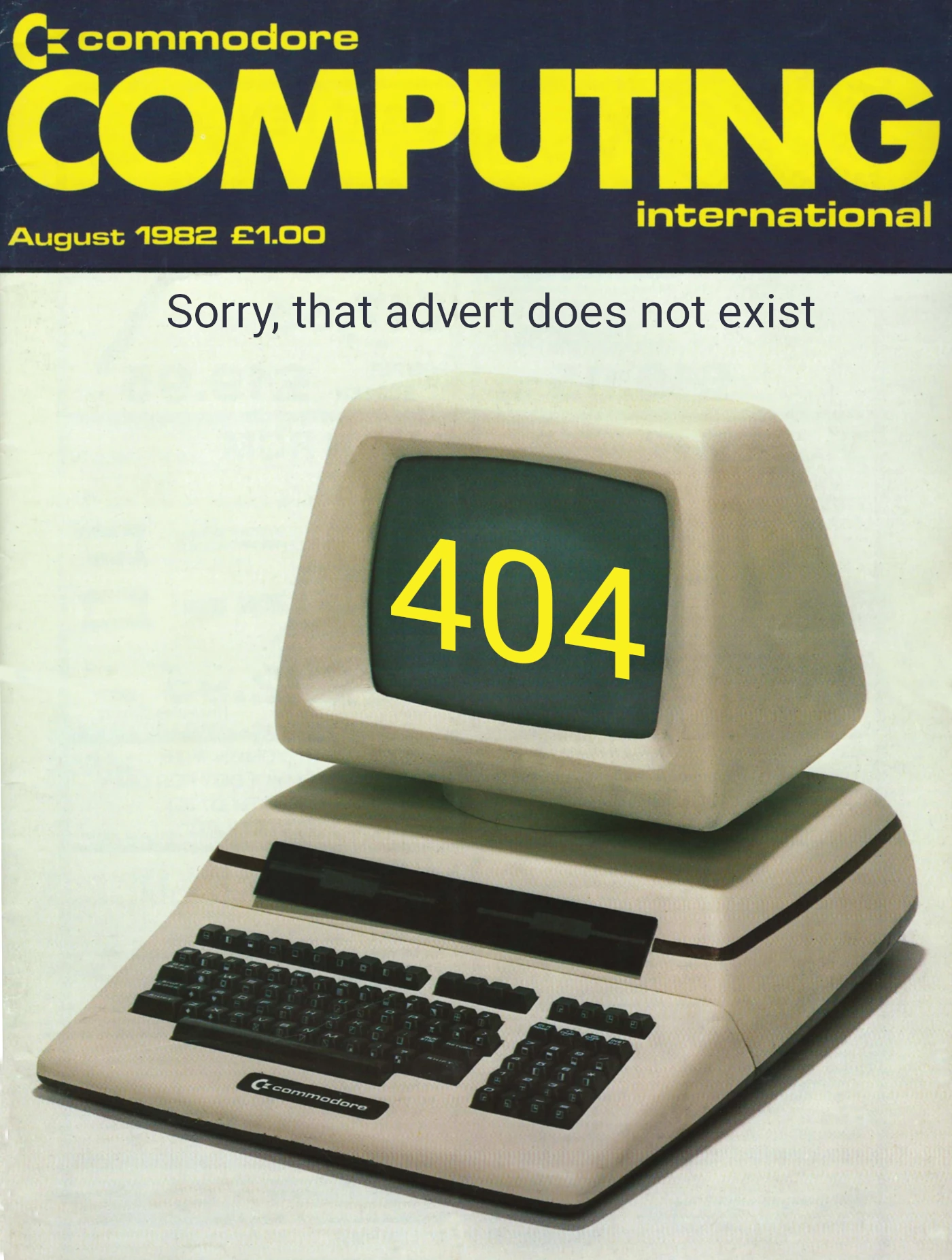A history of the microcomputer industry in 300 adverts
Acorn,
Acornsoft,
ACT/Apricot,
ACT/Computhink,
Aculab,
Advance,
Advance Memory Systems,
Ai Electronics,
Alpha Micro,
Altos,
Amstrad,
Apple,
Asda,
Atari,
BASF,
BCL,
Bendix,
Bondwell,
British Micro,
Bromcom,
Bywood,
C/WP-Cortex,
CAL,
Cambridge Computer,
Camputers,
Canon,
Casio,
Casu Electronics,
Cifer,
Climax International,
Coleco,
Columbia,
Comart,
Commodore,
Compaq,
Compucolor Corporation,
Compukit,
CompuServe,
Computer Facilities,
COMX,
Corvus,
Cromemco,
Cyber Electronics,
DAI,
Data General,
Dataindustrier/Luxor,
Dell,
Digital,
Digital Group,
Digital Research,
Dragon Data,
Durango,
Dynabyte,
EACA/Genie,
ECD,
Elliott,
Enterprise/Elan,
Epson,
Equinox/Parasitic,
Euro-Calc/Plessey,
Exidy,
Ferranti,
Fortronic,
Fortune,
Franklin,
Fujitsu,
Future,
GEC,
Gemini Micro,
Globe Business Machines,
Goldstar,
Goupil,
Gulfstream/Bytec,
Hayes,
Haywood,
Heathkit,
Hewlett-Packard,
HH,
Hitachi,
Hotel Microsystems,
Iasis,
IBM,
ICL,
Imagine,
IMSAI,
Intel,
Intertec,
IO Research,
Iotec,
ITCS,
Ithaca InterSystems,
ITT,
Jarogate,
Jupiter Cantab,
Kaypro,
Laskys,
Limrose,
LSI,
Mattel,
Memotech,
Metacomco,
MicroDaSys,
Micromation,
Micronet,
Micronix,
Microsoft,
Microtanic, Midwest Scientific Instruments (MSI),
Miracle Technology,
Mission,
MITS,
Mitsubishi,
Morrow Designs,
MOS Technology,
Multitech,
Namal,
Nascom/Lucas,
NCR,
NEC,
Netronics,
Newbury Laboratories,
Newbury/Grundy,
Newtons Laboratories,
North Star,
Noval,
Novation,
Ohio Scientific,
OKI,
Olivetti,
Olympia,
Onyx,
Opus,
Orb Micro,
Oric,
Osborne,
Pace,
Panasonic,
Pearcom,
PerSci,
Philips,
Polymorphic,
Portico,
Prism,
Processor Technology,
Psion,
Quantum,
Qume,
RAIR,
Rank Xerox,
RCA,
Research Machines,
Rockwell,
Sanyo,
Schneider,
Scicon,
Seiko,
Semi-Tech/Pied Piper,
Sharp,
Shelton,
Shugart,
Sinclair,
Sirius/Victor,
Smoke Signal,
Sord/CGL,
Soroc,
Space Byte,
Spectravideo,
SWTPC,
Tandata,
Tandon,
Tandy/Radio Shack,
Tangerine,
Tatung,
Tava,
TDI/Sage,
Telcon/Zorba,
TeleVideo,
Texas Instruments,
TLF,
Torch,
Toshiba,
Toyo Menka,
Transam,
Transtec,
Triumph-Adler,
Tulip/Compudata,
Tycom,
U-Micro,
Vector Graphic,
Victor,
VisiCorp,
Wang,
Wells American,
Wicat,
Wren Computers,
Xcalibur,
Yamaha,
Zen,
Zenith Data Systems,
Zilog

